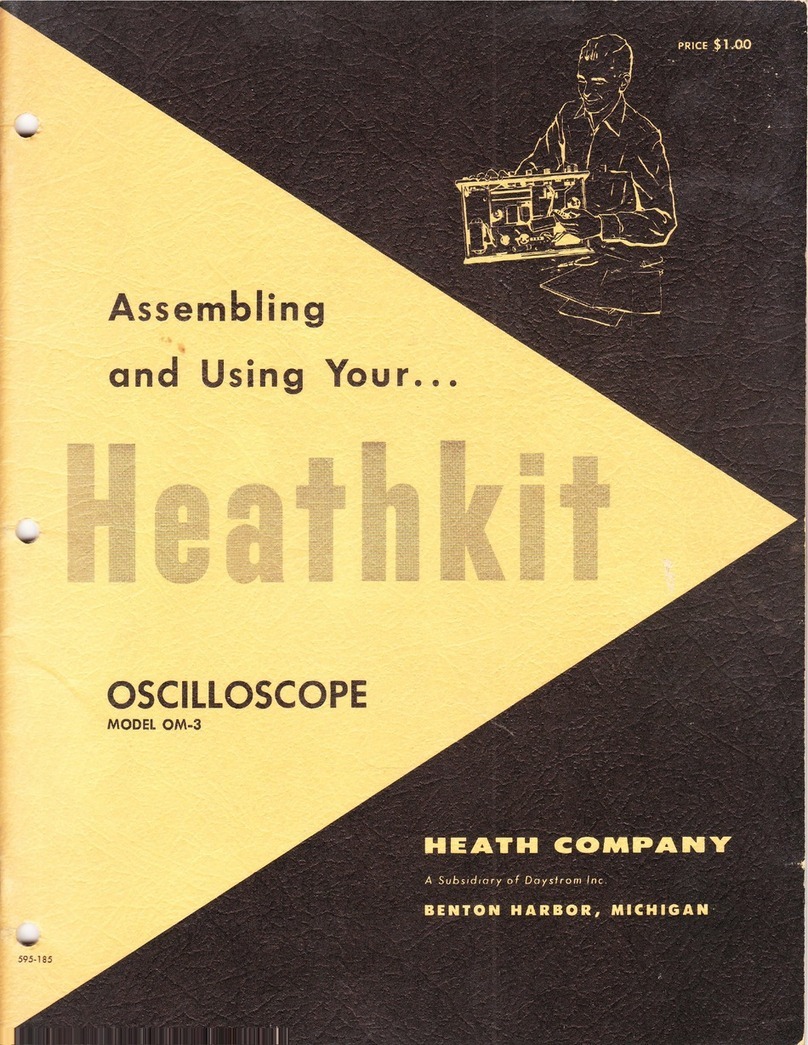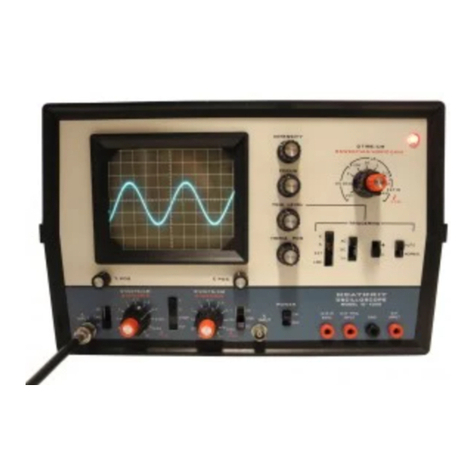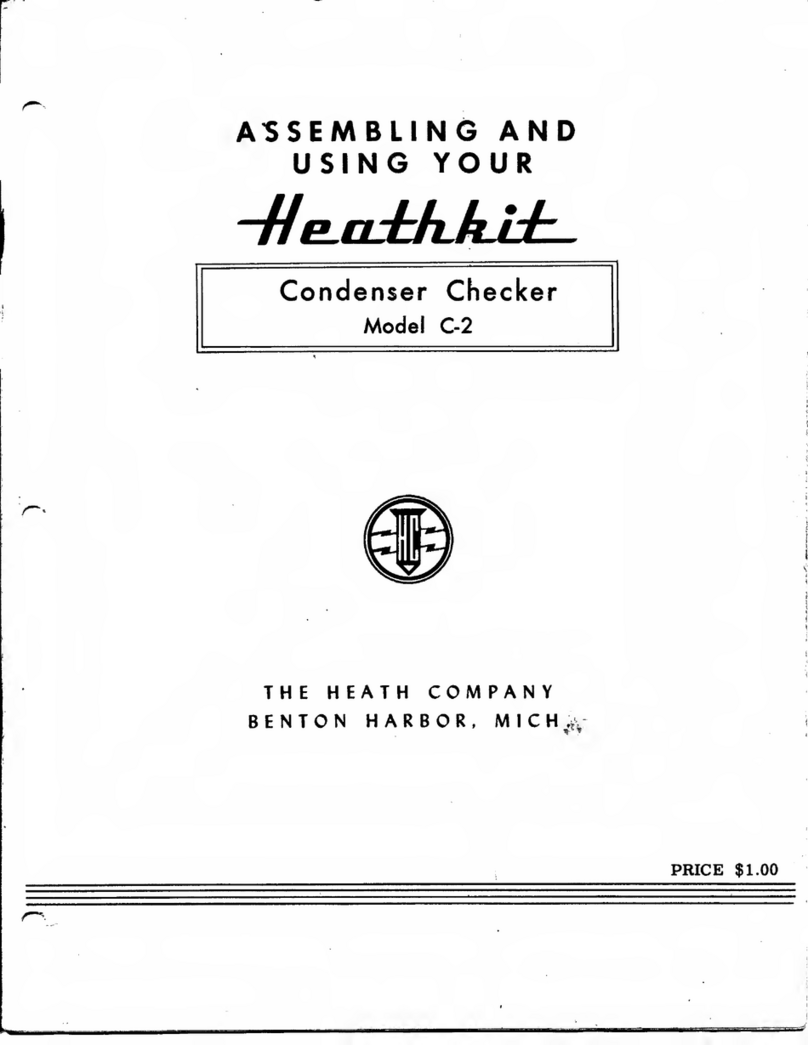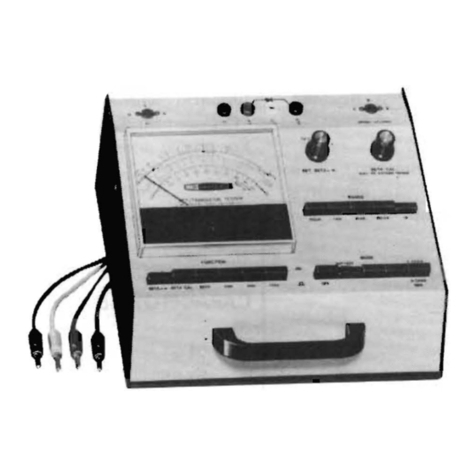
rate peak-to-peak voltage that can be set to one
of eight ranges: 30mV, 100mV, 300mV, 1.0V,
3.0V, 10V, 30V and 100V. Being a square wave
with flat tops and bottoms the calibration can
be more easily set than when using a sine wave.
The VC-3 also has an input to accept the signal
under test and an output that connects to the
oscilloscope input, so the user can switch be-
tween the signal being observed and the cali-
bration signal with the turn of a switch.
The layout of the Heathkit VC-3 front panel is
straightforward with only two switches and two
dual binding posts. On the left is a pair of five-
way binding posts marked SIGNAL, the upper
one being colored red and the lower one black.
On the right is a similar set of binding posts
marked OUTPUT. Dead-center on the front
panel is a nine-position rotary switch. The
switch positions are marked in clockwise order:
SIG[nal], 30, 100, 300, 1, 3, 10, 30, 100. The
second through fourth positions are bracketed
with the nomenclature M/VOLTS, and the last
five positions are bracketed VOLTS. PEAK TO
PEAK is marked below the switch. Below the
rotary switch is the power switch – a slide
switch marked OFF ON. Other nomenclature on
the front panel are: Heathkit VOLTAGE CALI-
BRATOR across the top, MODEL VC-3 at left
bottom and HEATH COMPANY BENTON HAR-
BOR, MICHIGAN on two lines at right bottom.
The VC-3 is housed in a 4–3/4 H x 7–3/8 W x
4–1/8 D gray cabinet and a dark gray front
panel with white nomenclature. The cabinet
(part# 90-39) is the same as used in many
other Heathkit models of the time including
the AM-2 SWR bridge and the QF-1 Q-
Multiplier.
Heathkit VC-3 Operation:
Operation is simple. Connect the VC-3 OUT-
PUT posts to the vertical input of the oscillo-
scope. Connect the signal to be viewed to the
INPUT posts of the VC-3. Place the PEAK TO
PEAK rotary switch in the SIG position and ad-
just the scope to view the signal as desired.
Next, switch the PEAK TO PEAK switch slowly
clockwise until the square wave vertical am-
plitude covers a reasonable amount of the
screen’s vertical real estate and adjust the
scope’s vertical gain a small amount as needed
to have the square wave cover a number of ver-
tical divisions on the scope graticule. You can
then easily calculate the vertical volts/division
at the current vertical gain setting. Now return
the PEAK TO PEAK switch to SIG, adjust the
vertical position as needed, but don’t touch the
vertical gain. Since you now know how many
volts each division is, you can measure the sig-
nal’s peak-to-peak amplitude.
VC-3 Limitations:
There is one caution Heathkit mentions in the
manual about using the VC-3. It involves using
the VC-3 inline with signals having sharp rise-
times or high frequencies over 100 kilocycles. If
you are measuring such signals then the signal
should be applied directly to the scope and not
through the VC-3. The necessitates swapping
the signal and VC-3 at the scope terminals as
needed to make a voltage measurement. The
reason is simple, the signal path through the
VC-3 involves wiring that adds about 35 µµf
(pF in today’s lingo) of shunt capacitance to the
signal and this will cause attenuation of higher
frequency components of complex waveforms.
Still, having to swap leads at the scope vertical
Heathkit of the Month #64 - VC-3 Voltage Calibrator HOM rev.new
Page 2 of 5 Copyright 2015, R. Eckweiler & OCARC, Inc.
Figure 3: VC-3 inside left, showing the vertical chassis,
transformer and three tubes (L to R) 6X4, 0A2 & 6AW8.




























